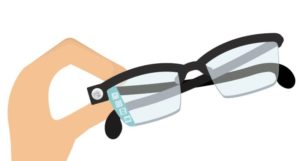
According to a new report by global research and advisory company Technavio, the global augmented reality (AR) market is expected to grow by $76.99 billion in the period between 2020-2024.
The growth in the market is expected to receive a boost from the growing AR-enabled smart glasses market. Smart glasses add contextual information using AR to enhance what the wearer sees, enhancing their real-world experience with information such as directions to a specified location, or information about a business they wish to visit.
Though the smart glasses market has yet to gain the same commercial success as other wearables markets such as fitness bands, smart watches, and earbuds, a number of products have been launched in recent years that hint at the potential of the segment.
Google Glass Enterprise Edition 2 launched in May of 2019 and joined Microsoft’s HoloLens 2, with both products featuring optical heads up displays (HUD). Earlier this month, North showed off the North Focals 2.0, which look to take the smart glasses concept into the mainstream consumer market with a more natural, less bulky and lighter look.
Also launched last year was a biometrics-enabled smart glasses platform by Vuzix and ST Engineering. As more products and platforms continue to launch and develop, their adoption should increase and boost the growth of the AR market during the forecast period.
The AR market is also expected to see growth via increased integration with mobile devices. Smartphone manufacturers have been increasingly turning to AR services to enhance user experience and differentiate their products and platforms from their competitors.
The Windows Lumia range of smartphones has the City Lens AR app, while Google has Google Translate, which uses AR to offer real-time translations via its built-in camera app. Google Maps also offers AR features whereby the user can point their smartphone at a business when navigating in Maps and see relevant information listed on the businesses’ Maps profiles.

Follow Us